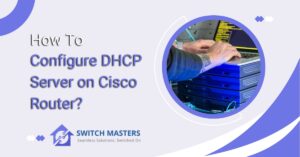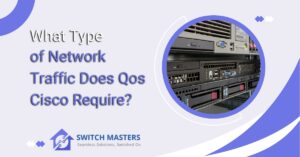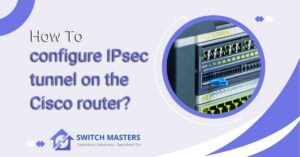Learn how to delete VLAN data on Cisco Switch 2960 efficiently. This comprehensive guide provides step-by-step instructions, tips, and FAQs to make the process easy for you.
Table of Contents
Introduction
If you’re a network administrator or working with Cisco Switch 2960, you may need to delete VLAN data at some point. This task may seem daunting, but with the right knowledge and guidance, it becomes a straightforward process. In this article, we’ll explore the ins and outs of how to delete VLAN data on Cisco Switch 2960. We’ll break down the steps and provide you with expert insights to ensure you can perform this task with confidence.
Understanding VLAN Data
Imagine your computer or device as a member of a club – a network. In this club, members talk to each other, share information, and share their secrets. But sometimes, you want to create smaller groups within the club, like a VIP section, where only special members can enter.
VLAN data is like the rule book for these VIP sections. It contains all the special settings and secrets about who belongs to each group and how they communicate. These settings help keep the network organized, secure, and efficient.
Why Delete VLAN Data?
Now, why would you want to delete these rules? Well, sometimes, the club changes. You may need to make new VIP sections, or some sections become less important. So, you need to update the rule book or even remove some rules that are no longer needed.
Why is Deleting VLAN Data Important?
Think of it like cleaning out your closet. By deleting old rules, you keep your network organized and running smoothly. It’s also a security measure – by removing outdated rules, you reduce the chances of unwanted guests entering your network club.
How to Delete VLAN Data on Cisco Switch 2960?

Preparation
Before you dive into the process of deleting VLAN data on your Cisco Switch 2960, it’s essential to be well-prepared. Think of this preparation phase as gathering all the necessary tools and information before starting a project. Here’s what you need to do:
- Access Credentials: You’ll need the login credentials for your Cisco Switch 2960. Just like you need a key to open a door, these credentials are your keys to access the switch’s settings.
- VLAN Data Backup: It’s a good practice to have a backup of your VLAN data. Think of it like making a copy of an important document before making changes. This backup ensures you can restore your settings if something goes wrong or if you need to refer back to them later.
- Identify What to Delete: Before you begin, have a clear understanding of which VLAN data you want to delete. It’s like deciding which files or items you want to remove before cleaning up a room.
- Verify Your Plan: Double-check your plan and ensure it aligns with your network’s requirements. This step is like reviewing your project outline before starting a task to make sure you’re on the right track.
By being well-prepared, you’ll approach the process of deleting VLAN data on your Cisco Switch 2960 with confidence and ensure a smoother experience.
Accessing the Switch
To make changes to your Cisco Switch 2960, you first need to access it. This is similar to unlocking a door before you can enter a room. Here’s how you can do it:
- Choose Your Path: You have two options for accessing the switch – through the Command Line Interface (CLI) using SSH or by establishing a direct console connection. It’s like deciding whether you want to enter a room through a keycard or a physical key.
- Enter the CLI: If you choose to go through the CLI, it’s like using your chosen keycard. You’ll enter the CLI interface by using SSH and providing the necessary login credentials.
- Elevate Your Privileges: Just like some rooms require a special access level, you’ll need to elevate your privileges by using the ‘enable’ command. This will grant you access to the switch’s inner workings.
Identifying and Deleting VLAN Data
Once you’ve accessed your Cisco Switch 2960, the next step is to identify and delete the specific VLAN data you no longer need. Think of this process as cleaning up unnecessary files on your computer to free up space and improve efficiency. Here’s how you can do it:
- Investigate Existing VLANs: Use the command show vlan to view the list of existing VLANs. Think of it as checking the labels on different folders to understand their contents. This step helps you identify which VLAN data you want to delete.
- Access VLAN Configuration Mode: Now, it’s time to enter VLAN configuration mode. It’s like opening a specific folder on your computer to make changes inside. Use the command configure terminal to enter this mode.
- Remove Unwanted VLANs: Inside VLAN configuration mode, use the command no vlan [VLAN_ID] to delete the VLAN data. Replace [VLAN_ID] with the specific VLAN number you wish to remove. This step is akin to deleting unwanted files – it helps declutter your network settings.
- Double-Check Your Actions: Before you finalize the changes, it’s essential to review your actions. Think of this as reviewing the files you’re about to delete to ensure you’re not removing anything important. Verify that you’re deleting the correct VLAN data.
- Save Your Configuration: Once you’re sure about your changes, exit VLAN configuration mode and save your configuration. This step ensures that your changes are applied permanently, similar to saving your changes in a document before closing it.
FAQ’s
What is the importance of deleting VLAN data?
Deleting VLAN data is crucial for network maintenance and security. It allows you to remove unnecessary or outdated configurations, enhancing network performance and reducing potential security risks.
Can I recover deleted VLAN data?
Once you delete VLAN data, it’s essential to have backups. Without a backup, recovery can be challenging, so always ensure you have a copy of your configurations.
Are there any risks involved in deleting VLAN data?
Yes, there are risks. Deleting the wrong VLAN or making configuration errors can disrupt network operations. Always double-check your actions before saving configurations.
Can I delete multiple VLANs at once?
Yes, you can delete multiple VLANs in a single session by using the no vlan [VLAN_ID] command for each VLAN you want to remove.
How often should I delete VLAN data?
The frequency of deleting VLAN data depends on your network’s dynamics. Regular maintenance, security updates, or hardware changes may necessitate occasional data deletion.
What if I encounter issues during the process?
If you encounter any problems or errors during VLAN data deletion, consult the Cisco Switch 2960 documentation or seek assistance from a network expert.
Conclusion
Deleting VLAN data on a Cisco Switch 2960 is a fundamental task for network administrators. It’s essential to have a clear understanding of the process, as mishandling VLAN data can lead to network disruptions. By following the steps outlined in this article, you can efficiently manage and delete VLAN data while maintaining network integrity and security.
Remember, always have backups, and exercise caution when making configuration changes. With this knowledge, you can confidently navigate the world of VLAN data management.















